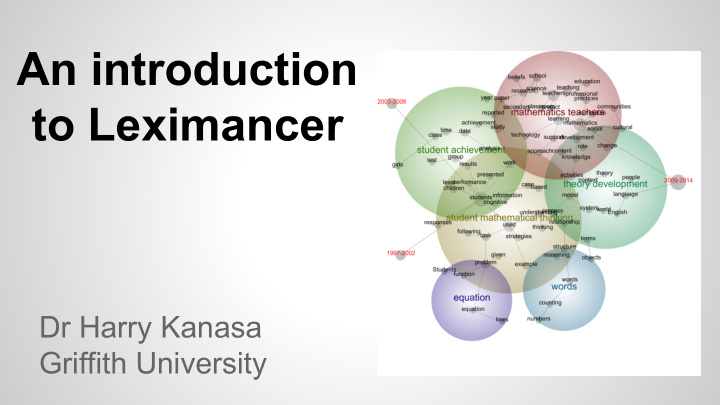



An introduction to Leximancer Dr Harry Kanasa Griffith University
Are you doing? Survey data analysis Transcript analysis Policy document analysis Literary analysis Social media analysis
Objectives ● Introduce you to Leximancer ● Understand how Leximancer works ● Interpret concept maps ● Explore different data types suitable for analysis ● Inspire you to explore Leximancer further
Why use Leximancer? ● get results fast(er) ● reduce human bias (increase validity) ● conducts thematic and conceptual analysis NOT just word counts ● multiple data types, multiple languages (latin characters)
What is Leximancer? How does it work?
Leximancer 101
Take away messages from the video - Natural language is dynamic and complex - We use ‘clusters of words’ that travel together throughout the text - Leximancer learns the grammar and vocab based on the text - Meaning emerges from the text - Analyse data via interactive concept map - Traditional and modern texts okay
Leximancer will not... - Write your results section for you - Give you sensible theme names (to begin with) - Tell you the best quotes to use
Cinderella: Literary analysis case study What concepts and themes do you think Leximancer will find? (hypothesise)
But why does my concept map look different?
Leximancer 201
Survey analysis
Leading Change project: Analysis of survey data case study ● 8 conferences were conducted around the state ● Participants asked to rate the effectiveness of the conferences ● download ‘satisfaction high vs low.csv’
Literature review/analysis
Online comment analysis
What’s Harry like as a teacher? What’s the quality of his teaching? What do students think of him? How has his teaching changed over time? “Access SET analysis files”
Recommend
More recommend